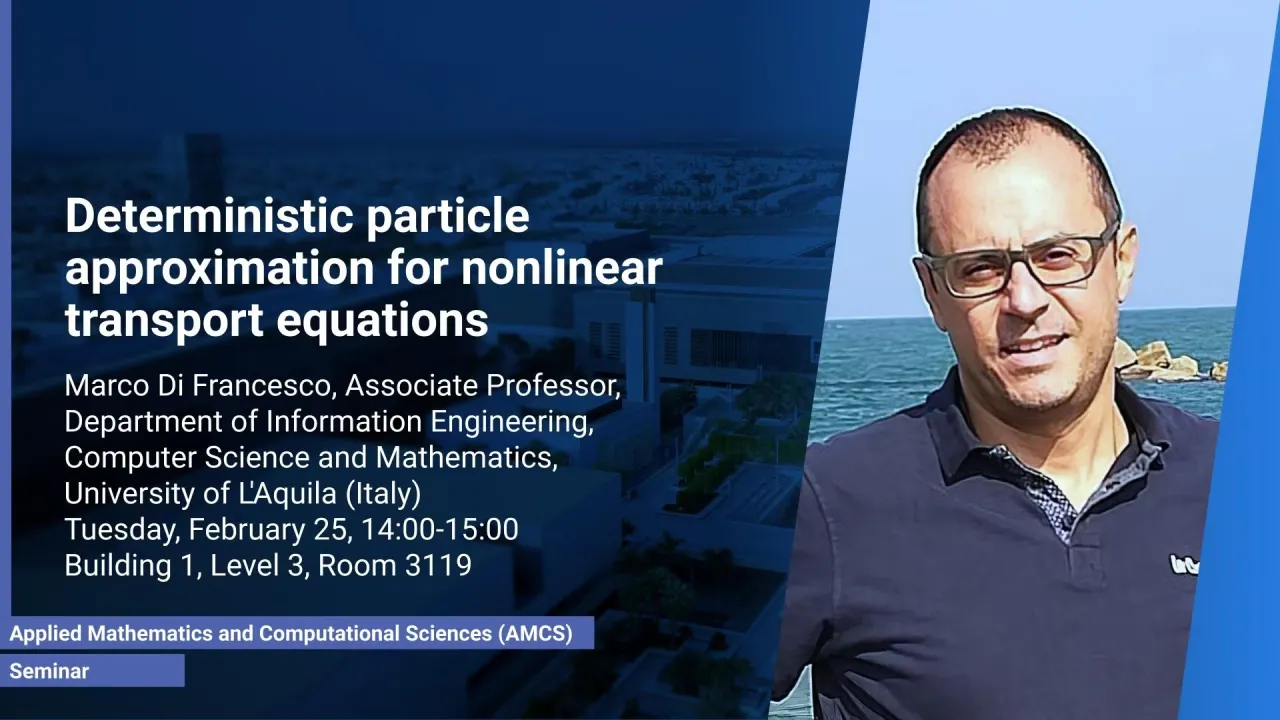
Deterministic particle approximation for nonlinear transport equations
Approximating the solution to an evolutionary partial differential equation by a set of "moving particles" has several advantages. It validates the use of a continuity equation in an "individuals-based" modeling setting, it provides a link between Lagrangian and Eulerian description, and it defines a "natural" numerical approach to those equations. I will describe recent rigorous results in that context. The main one deals with one-dimensional scalar conservation laws with nonnegative initial data, for which we prove that the a suitably designed "follow-the-leader" particle scheme approximates entropy solutions in the sense of Kruzkov in the many particle limit. Said result represents a new way to solve scalar conservation laws with bounded and integrable initial data. The same method applies to second order traffic flow models, to nonlocal transport equations, and to the Hughes model for pedestrian movements.
Overview
Abstract
Approximating the solution to an evolutionary partial differential equation by a set of "moving particles" has several advantages. It validates the use of a continuity equation in an "individuals-based" modeling setting, it provides a link between Lagrangian and Eulerian description, and it defines a "natural" numerical approach to those equations. I will describe recent rigorous results in that context. The main one deals with one-dimensional scalar conservation laws with nonnegative initial data, for which we prove that the a suitably designed "follow-the-leader" particle scheme approximates entropy solutions in the sense of Kruzkov in the many particle limit. Said result represents a new way to solve scalar conservation laws with bounded and integrable initial data. The same method applies to second order traffic flow models, to nonlocal transport equations, and to the Hughes model for pedestrian movements.
Brief Biography
Formerly Reader in Mathematics at the University of Bath (UK), Marco Di Francesco is now Associate Professor at the University of L'Aquila (Italy). He was P. I. of a Marie Curie CIG grant in 2014-2016, Chair of an ESF Research Conference in 2012, "Ramon y Cajal" fellow at UAB Barcelona in 2011-2012. His research is focused on the rigorous analysis of partial differential equations in various settings. Most of his results deal with the mathematical theory and the emergent behavior of models arising in biological aggregation phenomena, traffic flow modeling, and human crowds behavior.